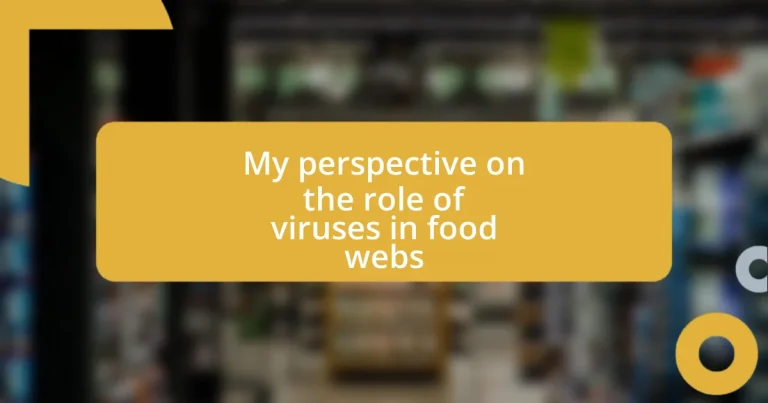Key takeaways:
- Food webs illustrate complex interactions in ecosystems, where the loss of a single species can have widespread consequences, highlighting the interconnectedness of life.
- Viruses play a crucial role in regulating populations, nutrient cycling, and contributing to genetic diversity, often acting as natural pest control agents within ecosystems.
- Future research in virology could explore viruses’ roles in climate change, therapeutic potential, and impacts on agricultural practices, with significant implications for ecosystem health and food security.
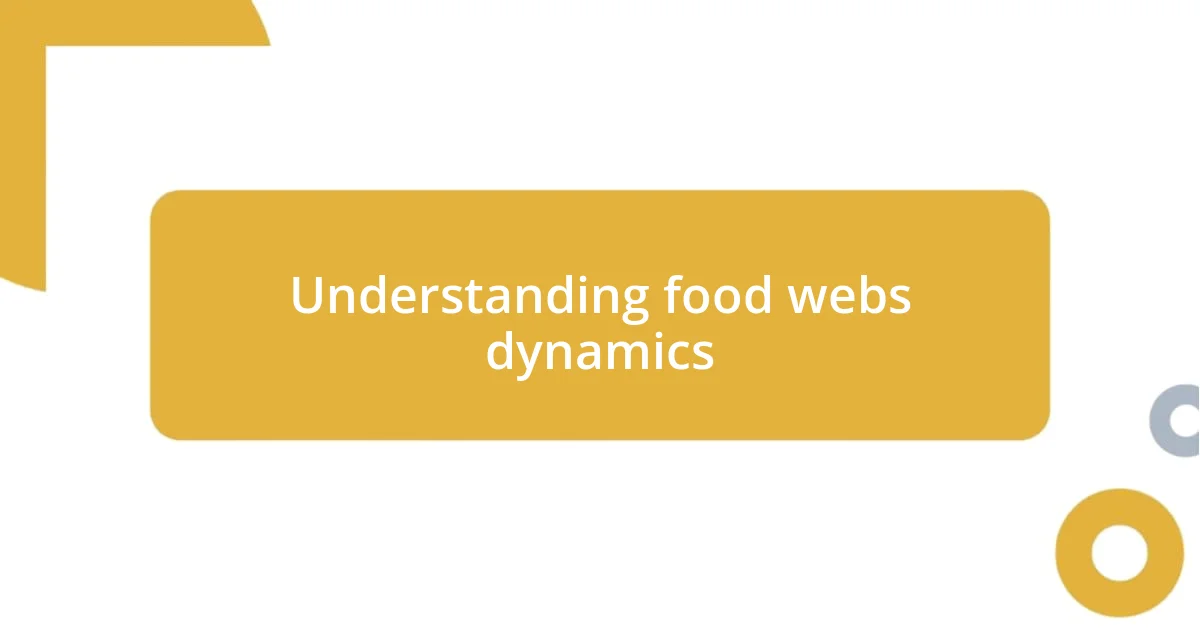
Understanding food webs dynamics
Food webs are intricate networks that illustrate how energy and nutrients flow through ecosystems, connecting diverse organisms in a dynamic balance. I often marvel at how the loss of a single species can ripple through this delicate interconnectedness, creating unexpected consequences for both predators and prey. Have you ever considered how a simple change in a habitat can lead to a cascade of shifts in these relationships?
As I delve into this topic, I can’t help but recall a time spent hiking in a forest where every sight and sound felt alive with interactions. Observing birds on the hunt, while plants thrived from the nutrients recycled by decomposers, really opened my eyes to this complexity. It made me wonder: how often do we overlook the small players in these webs, like viruses, that might not appear significant at first glance but play a pivotal role in maintaining these delicate balances?
The dynamics of food webs are not just academic—they’re deeply personal. I often reflect on how my actions, like choosing to support local ecosystems or making sustainable food choices, can impact these networks. Each decision contributes to the health of the web, echoing the idea that we’re all part of this extraordinary interplay of life. What role do you feel you play in ensuring the stability and resilience of these ecosystems?
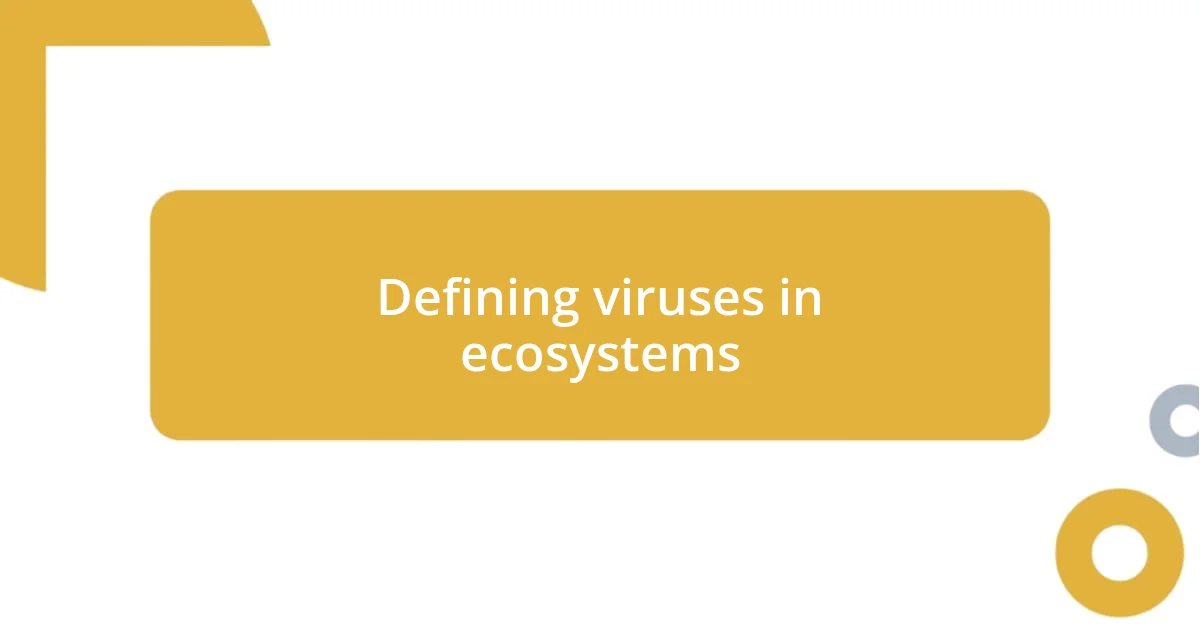
Defining viruses in ecosystems
Viruses are often viewed through a narrow lens, usually seen as pathogens that cause diseases, but their role in ecosystems is far more nuanced. In the intricate dance of life, viruses influence everything from microbial populations to higher trophic levels. I’ve found it fascinating how these microscopic entities can regulate host populations and contribute to genetic diversity, sometimes even driving evolution in unexpected ways.
Here are a few key points to consider about viruses in ecosystems:
- Viruses can infect a variety of hosts, including bacteria, plants, and animals, creating a complex web of interactions.
- They play a crucial role in nutrient cycling by lysing (breaking down) cells, releasing nutrients that are available for uptake by other organisms.
- Some viruses help control harmful microbial populations, serving as natural pest control agents.
- They contribute to evolutionary processes, as they can transfer genes between different organisms, leading to new traits and adaptations.
Reflecting on my own experiences, I’ve noticed how the health of a pond I visit regularly might hinge on these viral interactions, reminding me that every component—visible or not—contributes to the ecosystem’s vitality. It’s a humbling realization that the smallest players often have the biggest impacts, something I think we should all keep in mind as we interact with our environment.
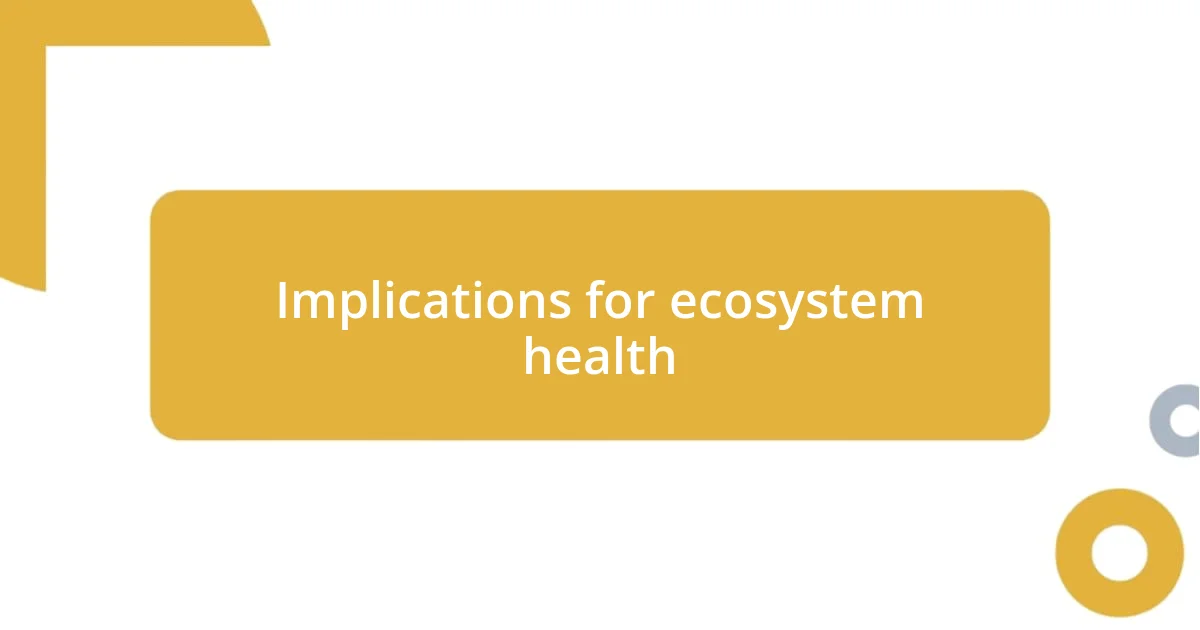
Implications for ecosystem health
Viruses, often overlooked, play a surprisingly critical role in maintaining ecosystem health. They help regulate populations and contribute to the stability of the complex interactions within food webs. I remember watching a documentary about lake ecosystems, where outbreaks of certain viruses actually reduced harmful algal blooms, leading to clearer water and healthier fish populations. It’s incredible to witness how such tiny entities can have profound effects on the overall ecosystem.
When I think about how viruses can influence ecosystems, I can’t help but smile at the memory of my childhood walks along a riverbank. I’d often scoop up muddy water, fascinated by the tiny organisms swirling. Learning that viruses could control these microorganisms reinforced my appreciation for the unseen forces shaping our environment. It’s like a hidden choreography, with each dance step crucial for balance and harmony within nature’s grand performance.
There’s also an intriguing aspect of nutrient cycling that ties back into virus dynamics. By breaking down cells and releasing nutrients, viruses ensure that energy continues to flow through the web of life. This process brings me back to my community garden, where observing how nutrients from decomposed plant material fuel new life is nothing short of magical. Understanding that viruses are part of this cycle only deepens my respect for the intricate web of connections that sustain life around us.
| Aspect | Role of Viruses |
|---|---|
| Population Regulation | Viruses help control host populations, preventing overgrowth and maintaining balance. |
| Nutrient Cycling | They lyse cells, releasing nutrients for other organisms, enhancing ecosystem productivity. |
| Disease Control | Some viruses naturally reduce harmful microbial populations, acting as eco-friendly pest controllers. |
| Genetic Diversity | Viruses facilitate gene transfer, encouraging evolution and fostering adaptability among species. |
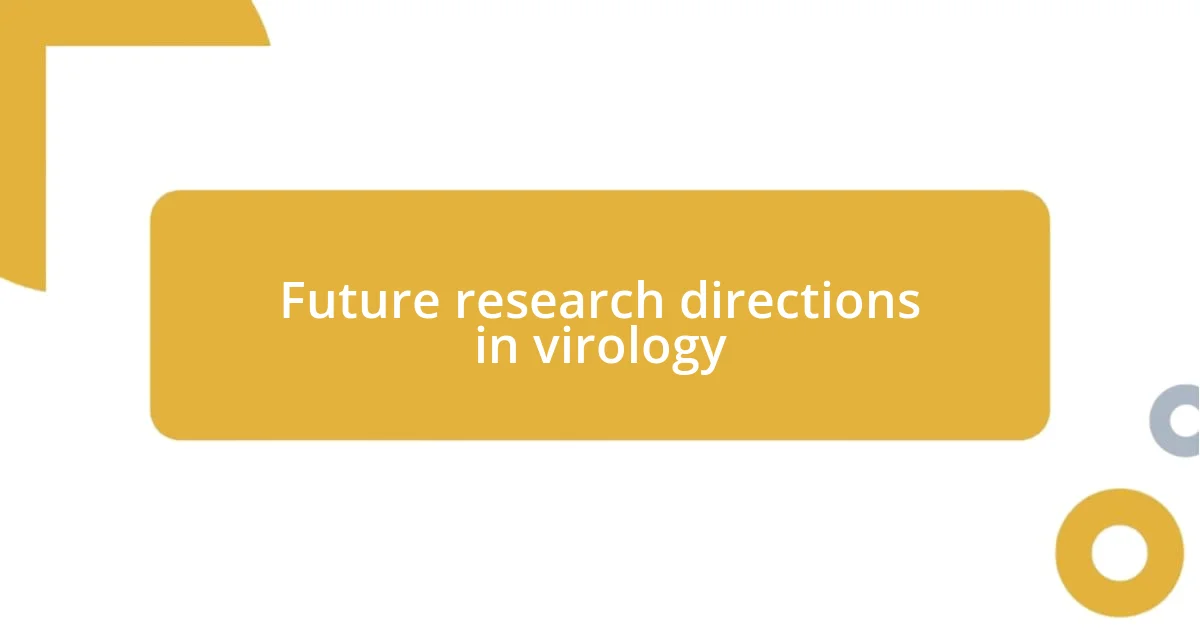
Future research directions in virology
Looking ahead, one exciting direction for virology research is examining the role of viruses in climate change scenarios. I often wonder how changing environmental conditions alter viral behaviors and interactions within ecosystems. For example, do viruses adapt alongside their hosts in response to rising temperatures, and how does that impact biodiversity? Exploring this relationship could lead to enlightening discoveries about resilience and vulnerability in our planet’s interconnected systems.
Another promising avenue for investigation involves the therapeutic potential of viruses. Personally, I find the idea of harnessing viruses as natural remedies intriguing. Imagine a future where engineered bacteriophages target antibiotic-resistant bacteria, saving lives without the harsh side effects of conventional treatments. By understanding the intricacies of these viral mechanics, researchers may unlock new possibilities for disease management that align with our growing need for sustainable healthcare solutions.
Lastly, there’s a wealth of knowledge still to be discovered about the interplay between viruses and plant life. I vividly recall visiting a botanical garden where I marveled at the diversity of plant species, and it left me pondering how many of those were influenced by viral interactions. How might we leverage viruses to improve crop yields or empower plants to resist diseases? Investigating this relationship is not just academic—it could directly impact food security and agricultural practices in the coming years. Every study in this field holds the potential for profound implications on our health and the ecosystems around us.












